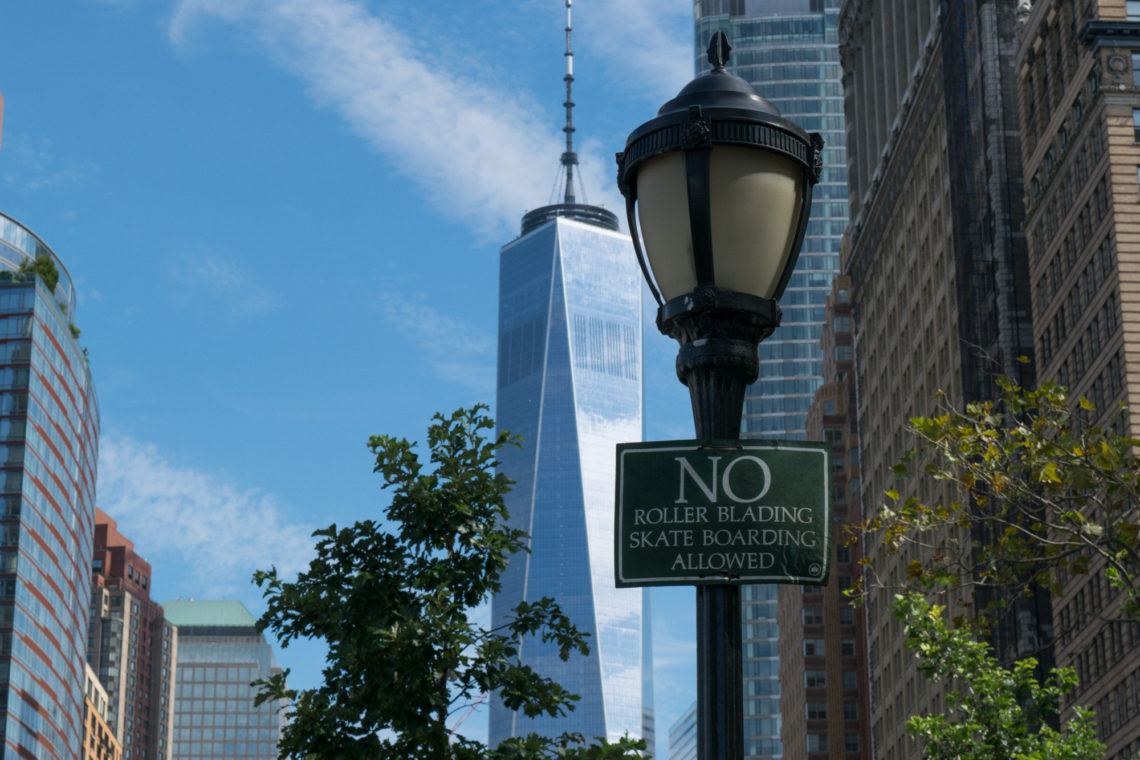Listen: an interview with Daniel D’Oca
Essay
Humans are social animals, and yet that innate sociability comes with important caveats. Exactly who do we want to live sociably with? The enlightened answer is “with anyone and everyone”, but our baser instincts often undermine this goal, replacing the open spirit with the closed; for too many, the simple answer is that we want to live with people like us – however “us” may be defined.
As places where humans live together most densely, cities cannot help but reflect this dichotomy. Their intent is to be open – we gave up building walls around them a long time ago – welcoming outsiders and bringing people together in exchanges of money, goods and services, techniques, ideas, cultures. Yet as the authors of The Arsenal of Exclusion & Inclusion (available from Actar Publishers, and through Amazon) point out, a range of tools both obvious and subtle are available to municipal governments, urban planners, and developers who may want to exclude or include categories of people from the aspects of the city they control.
A park bench that looks thoughtfully designed with armrests – until you try to lie down on it for a nap. A street with fire zone signs that prevent parking near a public beach – effectively reserving the beach for local residents. An attractive, landscaped berm at the edge of a housing development – that also serves as a boundary between racially-segregated neighbourhoods. All of these and many more – the authors describe 156 tools in the “arsenal” that they’ve discovered so far – have been used to curtail access to amenities or particular areas by people considered undesirable.
As one of the books co-authors, Daniel D’Oca of urban design firm Interboro Partners, points out in my recent interview with him (listen to it on SoundCloud, above), the Fair Housing Act (part of the Civil Rights Act of 1968) has acted as an ultimately effective bar to the excesses of the exclusionary impulse. But victory in this fight is never automatic and always requires effort on the part of those who believe in the Act’s principles. For example, D’Oca discusses the increasingly creative attempts by Louisiana’s St. Bernard Parish, in the wake of Hurricane Katrina’s devastation, to pass ordinances that would lock in the parish’s dominantly white demography: first by banning the renting out of single-family homes to anyone not a “blood relative” of the landlord (93% of homeowners in the parish are white), then – after losing a federal lawsuit under the Act – by prohibiting the leasing or lending of homes to anyone, and finally by imposing a moratorium on construction of multifamily dwellings (a federal court ruled the moratorium illegal).
One of the authors’ most interesting discoveries is the concept of an “exclusionary amenity”, described in an important 2003 paper by University of Chicago legal scholar Lior Jacob Strahilevitz. Strahilevitz observed that while it is natural for the developer of a community or condominium to include “club goods” that residents will value and for which they will share the running costs – a swimming pool, for example – the same mechanism can be deployed with exclusionary intent:
“What if a developer selects a particular club good, not because the members of an association will actually derive substantial value from its use, but because the club good in question deters members of ‘undesirable’ groups from joining the community in question? In this case, potential members may join the club, and happily pay for the club good, knowing that by purchasing this club good they are simultaneously receiving the ‘benefits’ of exclusion without violating antidiscrimination laws.”
This kind of “soft” exclusion – a kind of demographic filtering based on the known preferences and behaviours of different groups – is tougher to combat than the “hard”, explicit exclusions of yesteryear that the Fair Housing Act made illegal. The challenge is broader, in fact, because most of the weapons in this arsenal are dual-natured: as D’Oca points out, the park bench with its multiple armrests that exclude the homeless from sleeping on it was placed there first as an inclusionary gesture to park-goers. Even parks themselves – a historically-unquestioned “good” in urban planning – have the potential to become perceived as “playgrounds for the rich”, as Toronto’s chief planner Jennifer Keesmaat recently warned, if we do not spend sufficient time and money thinking about how location, transit, design, and programmed events will together determine which groups of people can access and enjoy them.
Exclusion, in a sense, is the negative space in our well-intentioned designs. Dan D’Oca and his co-authors, Georgeen Theodore and Tobias Armborst, have compiled an encyclopedia that should both chasten us and sharpen our vision.
For further exploration
- The 4th International Architecture Biennale Rotterdam (2009), where the idea for the book first saw light — and the “sub-theme” on community and the American way of living, curated by Interboro Partners
- Kees Christiaanse’s lecture at LSE on the idea of the open city
- Lior Jacob Strahilevitz’s paper “Exclusionary Amenities in Residential Communities”
- More on the “blood relative” ordinance can be found on the book’s blog, in the New York Times, and at The Root.

